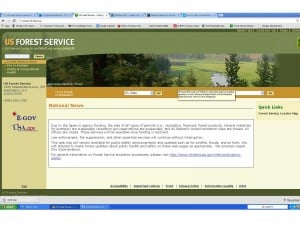Conservation Biology, October 2013
Volume 27, No. 5, 895-897
(c) 2013 Society for Conservation Biology
DOI: 10.1111/cobi.12147
Editorial: The “New Conservation”
By Dr. Michael Soule
A powerful but chimeric movement is rapidly gaining recognition and supporters. Christened the “new conservation,” it promotes economic development, poverty alleviation, and corporate partnerships as surrogates or substitutes for endangered species listings, protected areas, and other mainstream conservation tools. Its proponents claim that helping economically disadvantaged people to achieve a higher standard of living will kindle their sympathy and affection for nature. Because its goal is to supplant the biological diversity-based model of traditional conservation with something entirely different, namely an economic growth-based or humanitarian movement, it does not deserve to be labeled conservation.
Institutional allies and supporters of the new conservation include the Gordon and Betty Moore Foundation, the Long Now Foundation, the Nature Conservancy, and the social-justice organization The Breakthrough Institute (Nordaus & Shellenberger 2011). The latter write – in the style of the Enlightenment – that, “We must open our eyes to the joy and excitement experienced by the newly prosperous and increasingly free [persons]. We must create a world where every human can not only realize her material needs, but also her higher needs.”
The manifesto of the new conservation movement is “Conservation in the Anthropocene: Beyond Solitude and Fragility” (Lalasz et al. 2011; see also Kareiva 2012). In the latter document, the authors assert that the mission of conservation ought to be primarily humanitarian, not nature (or biological diversity) protection: “Instead of pursuing the protection of biodiversity for biodiversity’s sake, a new conservation should seek to enhance those natural systems that benefit the widest number of people, especially the poor” ). In light of its humanitarian agenda and in conformity with Foreman’s (2012) distinction between environmentalism (a movement that historically aims to improve human well-being, mostly by reducing air and water pollution and ensuring food safety) and conservation, both the terms new and conservation are inappropriate.
Proponents declare that their new conservation will measure its achievement in large part by its relevance to people, including city dwellers. Underlying this radically humanitarian vision is the belief that nature protection for its own sake is a dysfunctional, antihuman anachronism. To emphasize its radical departure from conservation, the characters of older conservation icons, such as Henry David Thoreau, John Muir, and Edward Abbey, are de-famed as hypocrites and misanthropes and contemporary conservation leaders and writers are ignored entirely (Lalasz et al. 2011).
The new conservationists assume biological diversity conservation is out of touch with the economic realities of ordinary people, even though this is manifestly false. Since its inception, the Society for Conservation Biology has included scores of progressive social scientists among its editors and authors (see also letters in BioScience, April 2012, volume 63, number 4: 242-243). The new conservationists also assert that national parks and protected areas serve only the elite, but a poll conducted by the nonpartisan National Parks Conservation Association and the National Park Hospitality Association estimates that 95% of voters in America want continued government support for parks (National Parks Conservation Association 2012). Furthermore, Lalasz et al. (2011) argue that it should be a goal of conservation to spur economic growth in habitat-eradicating sectors, such as forestry, fossil-fuel exploration and extraction, and agriculture.
The key assertion of the new conservation is that affection for nature will grow in step with income growth. The problem is that evidence for this theory is lacking. In fact, the evidence points in the opposite direction, in part because increasing incomes affect growth in per capita ecological footprint (Soule 1995; Oates 1999).
Other nettlesome issues are ignored, including which kinds of species will persist and which will not if the new economic-growth agenda replaces long-term protection in secure protected areas?
Related questions include:
Would the creation of designated wilderness areas be terminated? Would the funds to support the new conservation projects be skimmed from the dwindling conservation budgets of nongovernmental and government agencies? Is conservation destined to become a zero-sum game, pitting the lifestyles and prosperity of human beings against the millions of other life forms? Is it ethical to convert the shrinking remnants of wild nature into farms and gardens beautified with non-native species, following the prescription of writer Marris (2011)? Will these garden-like reserves designed to benefit human communities admit inconvenient, bellicose beasts such as lions, elephants, bears, jaguars, wolves, crocodiles, and sharks-the keystone species that maintain much of the wild’s biological diversity (Terborgh & Estes 2010; Estes et al. 2011)?
The new conservationists assume the benefits of economic development will trickle down and protect biological diversity. Even if that assumption were borne out, I doubt that children growing up in such a garden world will be attuned to nature or that the hoped-for leap in humanity’s love for the wild will occur once per capita consumption reaches a particular threshold.
Most shocking is the dismissal by the new conservationists of current ecological knowledge. The best current research is solidly supportive of the connection between species diversity and the stability of ecosystems. It has firmly established that species richness and genetic diversity enhance many ecological qualities, including productivity and stability of terrestrial and marine ecosystems, resistance to invasion by weedy species, and agricultural productivity; furthermore, research shows that greater species and genetic diversity reduces transmission rates of disease among species (Tilman 2012).
In contrast, implementation of the new conservation would inevitably exclude the keystone species whose behaviors stabilize and regulate ecological processes and enhance ecological resistance to disturbance, including climate change (Terborgh & Estes 2010). For these reasons and others, conservationists and citizens alike ought to be alarmed by a scheme that replaces wild places and national parks with domesticated landscapes containing only nonthreatening, convenient plants and animals.
The globalization of intensive economic activity has ac- celerated the frenzied rush for energy and raw materials and is devouring the last remnants of the wild, largely to serve the expanding, affluent, consumer classes in industrialized and developing nations. At current rates of deforestation, dam construction, extraction of fossil fuels, land clearing, water withdrawal, and anthropogenic climate change, it is expected that the 2 major refugia for biological diversity on the globe–the wet, tropical forests of the Amazon, and Congo Basin– will be gone by the end of this century (Mackey et al. 2013).
Is the sacrifice of so much natural productivity, beauty, and diversity prudent, even if some human communities and companies might be enriched? No. The worth of nature is beyond question and our obligation to minimize its gratuitous degradation is no less.
There is no evidence for the proposition that people are kinder to nature when they are more affluent, if only because their ecological footprints increase roughly in proportion to their consumption. We also know that the richer nations may protect local forests and other natural systems, but they do so at the expense of those ecosystems elsewhere in less affluent places. A third thing we know is that anthropogenic climate change is probably the greatest threat to civilization (Gleick et al. 2010).
I must conclude that the new conservation, if implemented, would hasten ecological collapse globally, eradicating thousands of kinds of plants and animals and causing inestimable harm to humankind in the long run.
Finally, I believe that those who donate to conservation organizations do so in full confidence that their gifts will benefit wild creatures and their habitats. The central issue is whether monies donated to the Nature Conservancy and other conservation nonprofit organizations should be spent for nature protection or should be diverted to humanitarian, economic-development projects such as those proffered by the new conservation on the dubious theory that such expenditures may indirectly benefit biological diversity in the long run.
Traditional conservationists do not demand that humanitarians stop helping the poor and underprivileged, but the humanitarian-driven new conservationists demand that nature not be protected for its own sake but that it be protected only if it materially benefits human beings.
A more literary version of this essay that highlights the intrinsic value of biological diversity can be accessed at www.michaelsoule.com.
Literature Cited
Estes, J. A., et al. 2011. Trophic downgrading of plant earth. Science 333:301-306.
Foreman, D. 2012. Take back conservation. Raven’s Eye Press, Durango, Colorado.
Gleick, P. H., et al. 2010. Climate change and the integrity of science. Science 328:689-690.
Kareiva, P. 2012. Failed metaphors and a new environmental- ism for the 21st century. Available from http://www.youtube. com/watch?v=4BOEQkvCook (accessed April 2013).
Lalasz, R., P. Kareiva, and M. Marvier. 2011. Conservation in the an- thropocene: beyond solitude and fragility. Breakthrough Journal 2: http://thebreakthrough.org/index.php/journal/past-issues/issue-2/ conservation-in-the-anthropocene/.
Mackey, B., I. C. Prentice, W. Steffen, J. I. House, D. Lindenmayer, H. Keith, and S. Berry. 2013. Untangling the confusion around land carbon science and climate change mitigation policy. Nature Climate Change 3:552-557.
Marris, E. 2011. Rambunctious garden. Bloomsbury, New York. National Parks Conservation Association. 2012. New poll of likely voters finds unity in public support for national parks. National Parks Conservation Association, Washington, D.C. Available from http://
www.npca.org/news/media-center/press-releases/2012/poll_ parks_support_080712.html (accessed June 2013).
Nordaus, T., and M. Shellenberger. 2011. From the editors. Break- through Journal 2:7-9.
Oates, J. F. 1999. Myth and reality in the rainforest: how conservation strategies are failing in West Africa. University of California Press, Berkeley, California.
Soule _, M. E. 1995. The social siege of nature. Pages 137-170 in M. E. Soule _ and G. Lease, editors. Reinventing nature? Response to postmodern deconstruction. Island Press, Washington,D.C.
Terborgh, J., and J. A. Estes. 2010. Trophic cascades: predators, prey and the changing dynamics of nature. Island Press, Washington,D.C.
Tilman, D. 2012. Biodiversity & environmental sustainability amid human domination of global ecosystems. Daedalus 141:108-120.




